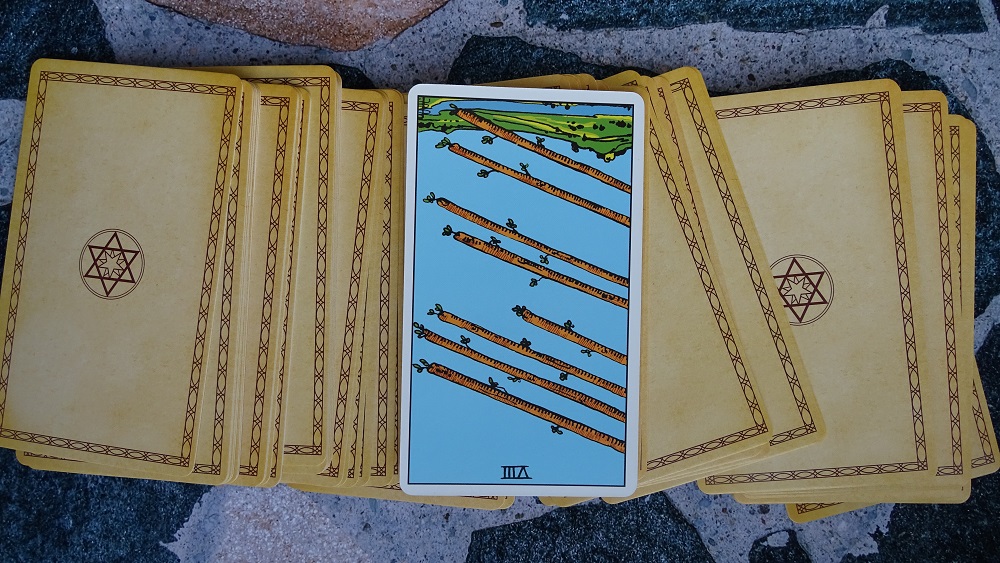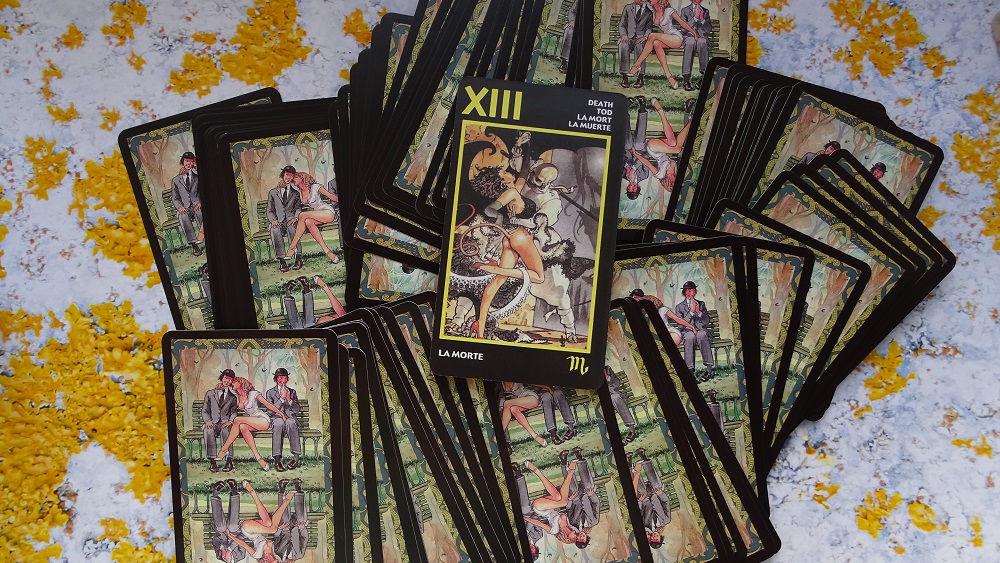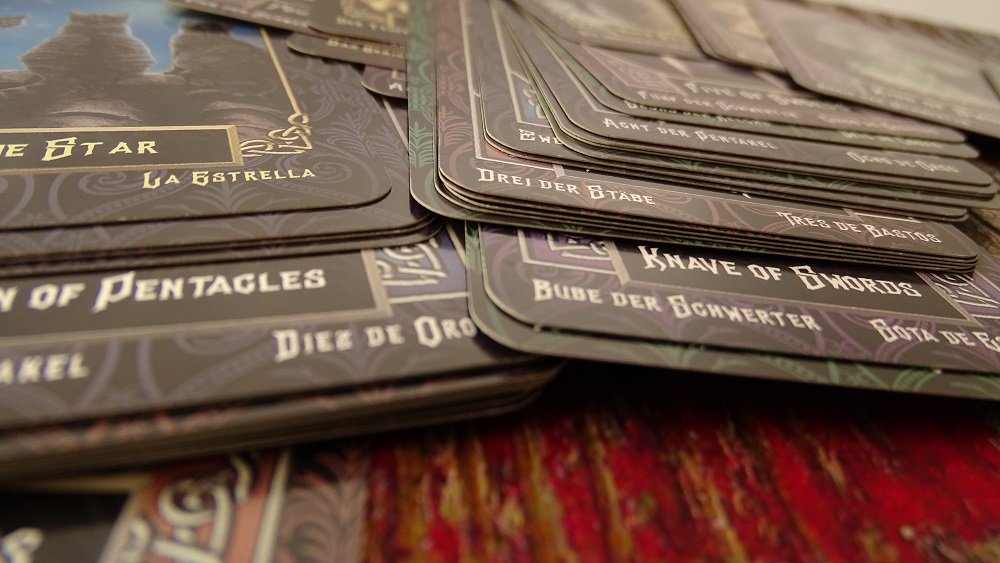How do you read reversed Tarot cards?
Working with Reversed Tarot Cards can be difficult and confusing for many. And this applies not only to beginners who begin their journey into the world of Tarot, but, sometimes, also for experienced Tarot readers.
In most cases, we can read the meanings of the cards in the magazine books, where they are attributed mostly with negative meanings. According to personal observations, many people are “frightened” by the fact that it is necessary to learn another deck of 78 cards – the “deck of Reversed Tarot Cards”.
These are the main aspects are the keys to the interpretation of the cards:
- Positive values
- Negative values.
- Neutral values.
In each situation, according to the question asked, the Tarot card can manifest itself in any of the above mentioned sides.
For example, let’s analyze the Four of Pentacles:
- A positive meaning is that the person lays a financial basis for a particular issue.
- A negative meaning is that the person is greedy, stingy, or completely attached to material things, in a low-resource state.
- A neutral meaning is that the person is careful about money.
Sometimes it is very beneficial to use neutral card values. In order to develop this skill in yourself, you can do the following exercise:
Analyze your own personality and define it as neutral as possible. To complicate the task, you can add the corresponding Tarot Arcana to each adjective-assessment. This will help you to anchor the meanings in the subconscious, and if such cards fall on a person’s personality Tarot spread, reading them will not cause any problems.
Working with reversed Tarot cards is always based on the value of the card in an upright position. If you perfectly understand and learn the basic meaning of the card in an upright position, there will be no problems with reading the reversed Tarot cards.
The appearance of Reversed Cards in the Tarot spread gives us an understanding of:
- What forces work in a given situation that the person wants to explore, on the side of the querent or against him.
- Openly (acting directly) or covertly manipulating the consciousness (and not only) of a person. Energy or resources that exist, but are currently blocked or not available.
- In general, the situation is developing positively or negatively, the negative aspects of the personality (court cards) that affect the situation.
- Problematic areas of the issue that is being addressed.
- Ways to solve the problematic situation in which the querent found himself.
- What is hidden deeply subconsciously, what the client does not see or cannot see. The so-called pitfalls of the situation.
- This is an area where urgent help is needed.
- Facilitating the work of the Tarot reader. Let me explain here: when working with a full deck, the Tarot reader himself is forced, by evaluating the spread, to understand which card and in which position plays the role of “negative”. This makes it a little more difficult to work. Also by using the Reversed Tarot Cards we open a new world of additional meanings.
- Conflict of internal process and external influence
Although there is no prerequisite for a Tarot reader to use Reversed Cards, I still believe that at least trying and getting to know them at work is obligatory for every self-respecting diagnostician.
The Reversed Tarot Card reading Rules:
- The meaning is opposite to the upright card. This approach implies the initial gradation of cards into good and bad. Based on opposite basic meanings of an upright card.
- Books and small white books. Many of the meanings in such short guides are artificial. Their meanings mostly lean towards the first method or towards the negative meaning of the card. Many of these values are practically not applicable.
- Weakening of an upright Tarot card next to it. This is a more interesting point, which requires knowledge of cards, positions and Tarot spreads. It’s no secret that each card in the spread has a clear position and is associated with at least two more. The reversed card has the meaning of the upright card, but weakens the interconnected cards in the spread.
- Challenges and obstacles. With this method of reading, the Reversed Cards indicate problem areas in the life of the querent. It also provides advice on how you can get out of such a situation. This method is good because there is an opportunity to turn negative into positive.
- Interpretation of Reversed court cards. As you know, Court Cards in Tarot Spreads can show not only personalities. Now we will touch upon the Court Cards in precisely these aspects. Any of the 16 personalities described by the Court Cards has both positive and negative aspects. In case of reversed cards, you should pay attention:
- if the person is dominated by negative qualities;
- if the person, intentionally or not intentionally, has a negative impact on the solution of the issue, on the plans of the querent or opposes / interferes with the querent;
- if there is any not worked out psychological part of the personality that interferes with the querent in resolving the issue;
- if there is a hidden / subconscious process in the mind of the querent;
- if there is uncertainty and helplessness of the querent in a certain area.
All of the above methods can be used for any Tarot card decks. These are the main and common methods. I advise you to try them all and decide for yourself which one is right for you.
Discover more from Esoteric Hut
Subscribe to get the latest posts sent to your email.



